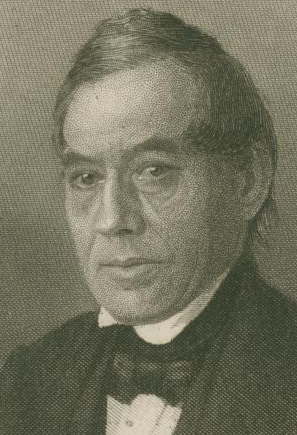Silk and Silk Makers
By Jack McCarthy | Reader-Nominated Topic
Essay
Philadelphia’s silk industry began in earnest in the early nineteenth century. There had been efforts since the early eighteenth century to cultivate the silk worm and establish silk-making operations in the region, but they had proven unsustainable or were carried out on a small scale. Philadelphia’s first successful silk manufacturer began operating in 1815, and by the mid-nineteenth century the city was a major silk producer. Philadelphia’s silk industry remained strong through the early twentieth century, after which it declined dramatically, along with the region’s overall textile industry.
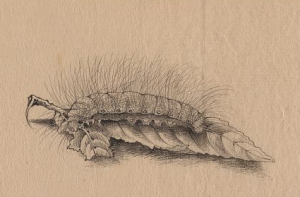
Efforts to establish a silk industry in America date from the earliest periods of colonial settlement. Many colonial business and political leaders believed that climate and soil conditions in the Atlantic colonies were conducive to cultivation of the mulberry trees on which silk worms fed and that growing raw silk and manufacturing silk products could be lucrative enterprises. In Pennsylvania, James Logan (1674–1751) promoted the idea to the Penn family, proprietors of Pennsylvania, in 1725 and noted the following year that silk made in Pennsylvania had been sent to England. In the late 1760s, Benjamin Franklin (1706–90), who had long been interested in silk cultivation and was then living in England, advocated starting a silk industry in Philadelphia. With support from Franklin and others, the American Philosophical Society established a Society for the Cultivation of Silk, which in 1770 opened a filature—an establishment for reeling silk—on Seventh Street between Arch and Market Streets. Some of the raw silk it processed was grown in New Jersey. (While other raw textiles such as cotton and wool were “spun” into fibers, silk was “reeled,” because each cocoon held just a single thread, often a mile long, which had to be unraveled then twisted together with other threads to form yarns.)
Noted Quaker writer and activist Susanna “Suzy” Wright (1697-1784), a woman of many talents and a correspondent with Logan and Franklin, raised silkworms in the 1770s and made a variety of silk products, some of which were reportedly sent to England. The Philadelphia Medical and Physical Journal published her article “Directions for the Management of Silk-Worms” posthumously in 1804.
The Revolutionary War interrupted Philadelphia’s nascent silk industry, but efforts revived in the Federal period. In the early 1790s prominent merchant and financier Robert Morris (1734–1806) planted thousands of mulberry trees for silk worm cultivation at his estate at the Falls of the Delaware (later Morrisville) in Bucks County, Pennsylvania, part of a plan to initiate large-scale silk manufacture. Elsewhere, farmers and enterprising businessmen grew silk that was processed locally, usually in homes or small shops, and made into clothing and other textile products. These tasks were generally done on a small scale and mostly by women.
Limited Success
Overall, these efforts had limited success. The Philadelphia region did not produce raw silk in large enough quantities to sustain an ongoing industry, while processing the silk it did produce was labor intensive and often not very profitable. Nevertheless, efforts to promote local silk cultivation continued. Civic leader Peter DuPonceau (1760–1844), president of the American Philosophical Society, zealously advocated for the silk industry in the early 1830s. He personally supported local silk growing and production initiatives and petitioned the U.S. Congress, unsuccessfully, for federal support for a nationwide industry. Other prominent Philadelphians who attempted silk cultivation in the 1830s include financier Nicholas Biddle (1786–1844), who invested heavily in mulberry trees at his estate, Andalusia, in Bucks County, and lawyer Philip Syng Physick Jr. (1807–48), who erected a building, known as The Cocoonery, for silk cultivation in Germantown.
In the mid-1830s a new species of mulberry tree was introduced into America that purportedly grew much faster and could feed significantly more silkworms than the native species. This gave rise to a brief silk craze, with increased, widespread attempts at domestic silk cultivation and much financial speculation in the industry. The eventual discovery that the new species was unsuitable for the American climate, together with the nationwide financial panic of 1837, put many silk growers out of business and effectively ended the large-scale cultivation of silk in the United States. Small-scale cultivation continued, but from the mid-nineteenth century on, large-scale manufacturers of silk products mostly imported their raw materials.
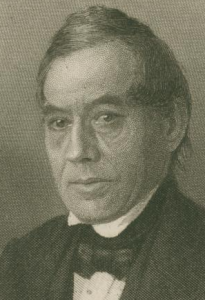
Philadelphia’s first major silk goods maker was William Horstmann (1785–1850), a German immigrant who settled in the city in 1815 and established a successful silk-weaving shop specializing in making tassels, fringe, and lace. In 1824 Horstmann was the first American textile manufacturer to use the Jacquard loom, a mechanical loom controlled by punch cards that became widely used in the textile industry. Around 1831 he built a factory at Germantown and Columbia (later Cecil B. Moore) Avenues in Kensington, and in 1854 the company, then run by his sons, built a large five-story factory at Fifth and Cherry Streets in Old City that eventually employed as many as five hundred workers. The Horstmann company later specialized in making silk materials for the military such as flags, braids, and ornamental trimmings, becoming the nation’s largest producer of such goods. Two other major silk manufacturers were located near the Horstmann plant in the this period: J. C. Graham, established in 1850 near Fifth and Cherry Streets , and Hensel, Colladay, & Company, established in 1851 on Fourth Street above Market.
Women Dominated the Workforce
A large percentage of the city’s silk workers were women. By 1850 there were six silk manufacturers in Philadelphia, employing a total of 227 workers, of whom 146 were women. The work primarily entailed tending machinery, as silk production was mostly mechanized by this time. Women also participated in silk-worm cultivation, which continued on a small scale. In 1880 a group of Philadelphia women formed the Women’s Silk Culture Association of the United States. They presented a silk American flag to the U.S. Senate in 1885, noting that its silk was raised “in American homes by American women and children, reeled by the Women’s Association of Philadelphia (who are the only reelers of commercial silk in the country up to this time), spun, dyed, woven, and mounted in the city of Philadelphia.”
Philadelphia’s silk industry grew significantly in the late nineteenth century. An 1883 general census of Philadelphia manufacturers listed over sixty makers of silk products in the city, as well as several silk dyeing operations. Most of these companies employed anywhere from a handful to a few dozen workers, but seventeen of the firms had over one hundred workers and ten had over 250. Many of the companies were located in what became known as Philadelphia’s Silk District, the northern section of Old City between Market and Vine Streets, east of Sixth Street. Major silk manufacturers were located elsewhere in the city as well. Sauquoit Silk Manufacturing Company, based in upstate New York, built a factory in 1879 on Columbia Avenue in North Philadelphia that in 1888 employed 330 workers, four-fifths of whom were girls. (As in the broader American textile industry, child labor formed a significant part of Philadelphia’s silk workforce.) Orinoka Mills, in Kensington, had eighty-five looms and 250 workers in 1891. By 1900 one-third of the silk products made in America were produced in eastern Pennsylvania, both in Philadelphia and in the coal regions of the northeastern part of the state, where the wives and children of coal miners and railroad workers often worked in local silk mills to supplement the family income.
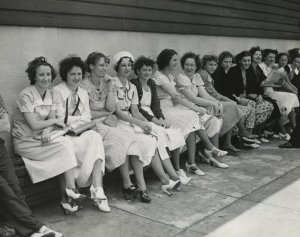
Hosiery items—stockings and socks—were the primary products of Philadelphia’s silk industry in the early twentieth century. Trends in women’s fashion during the 1920s “Jazz Age” created a huge demand for silk stockings, giving rise to a number of large Philadelphia hosiery mills that by the late 1920s employed thousands of workers. The largest were Apex Hosiery, with over 1,700 workers; Gotham Silk Hosiery, with over 1,500 workers; and H. C. Aberle Company and Triumph Hosiery Mills, both with over 1,100 workers. Labor unrest struck the industry in the 1930s. In April 1937 workers staged a successful sit-in at Artcraft Silk Hosiery, another major producer, when management resisted their efforts to unionize. A few weeks later, a prolonged, violent strike at Apex Hosiery also resulted in success for the workers. Unions played a powerful role in the city’s silk industry at this time, but later lost their power when the industry’s fortunes ebbed.
The Rise of Nylon
Philadelphia’s silk industry remained strong through the early twentieth century but began to decline in the years prior to World War II, part of a major reduction in silk production nationwide. In 1930 approximately one hundred thousand silk looms were operating in the United States; by 1950 the number had dropped to about three thousand. Subjected to the same adverse factors that eventually impacted many kinds of textile manufacturers in urban areas of the mid-Atlantic and northeastern United States—cheaper labor and energy costs elsewhere, competition from producers of cheaper goods, and increasingly strained relations between labor and management—several large Philadelphia silk manufacturers ceased operations or moved their factories out of the city in the 1930s and 1940s.
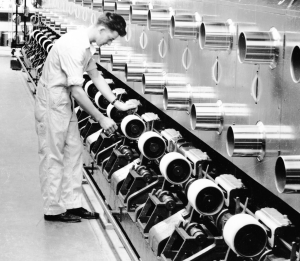
Two other mid-twentieth-century developments—one temporary, one permanent—also adversely affected the American silk industry. During World War II, supplies of raw silk, already curtailed by the interruption of its importation from Japan, were commandeered by the military for parachutes and other war needs. Of more lasting impact was the introduction in the late 1930s of the new synthetic material Nylon by the DuPont Company of Wilmington, Delaware. Nylon provided a cheaper, more durable alternative to silk for everything from women’s stockings to textiles for military applications. Its widespread use beginning in the late 1940s resulted in a huge decline in the demand for silk. By the late twentieth century, the heyday of silk manufacture in Philadelphia, like that of the region’s broader textile industry, was over.
Jack McCarthy is an archivist and historian who specializes in three areas of Philadelphia history: music, business and industry, and Northeast Philadelphia. He regularly writes, lectures, and gives tours on these subjects. His book In the Cradle of Industry and Liberty: A History of Manufacturing in Philadelphia was published in 2016 and he curated the 2017–18 exhibit Risk & Reward: Entrepreneurship and the Making of Philadelphia for the Abraham Lincoln Foundation of the Union League of Philadelphia. He serves as consulting archivist for the Philadelphia Orchestra and Mann Music Center and from 2011–16 directed a major archival project for the Historical Society of Pennsylvania focusing on the collections of the region’s many small historical repositories. (Author information current at time of publication.)
Copyright 2018, Rutgers University
Gallery
Links
- Winding Silk at the Sauquoit Silk Manufacturing Company, 1918 (ExplorePAHistory)
- Dery Silk Mill Historical Marker (ExplorePAHistory)
- History of the Apex Hosiery Building (Hidden City Philadelphia)
- The Generations Collide on Fabric Row (Hidden City Philadelphia)
- William H. Horstmann & Sons Ribbon Sample Book, 1850-72 (Historical Society of Pennsylvania)
- "The Cocoonery" of Germantown (Historical Society of Pennsylvania)


